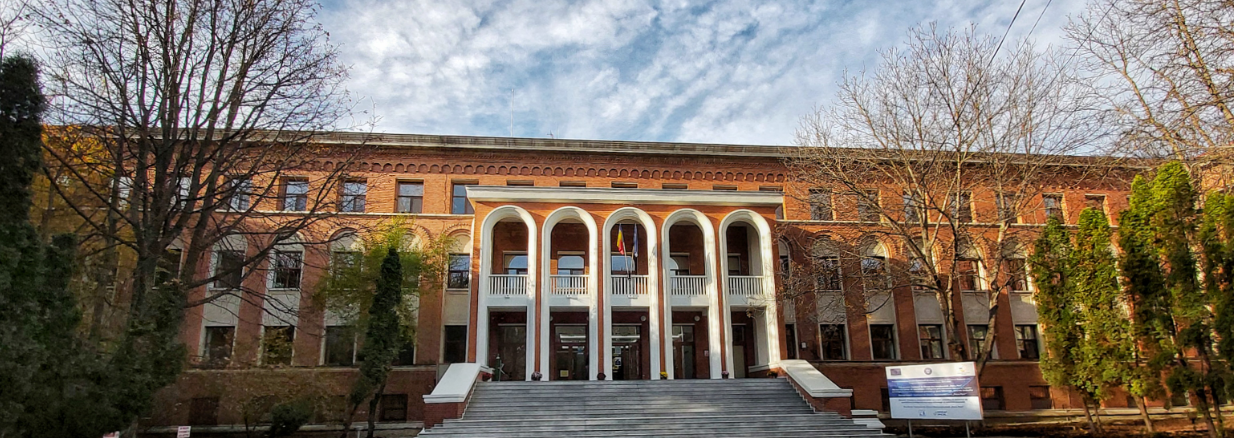Main Results:

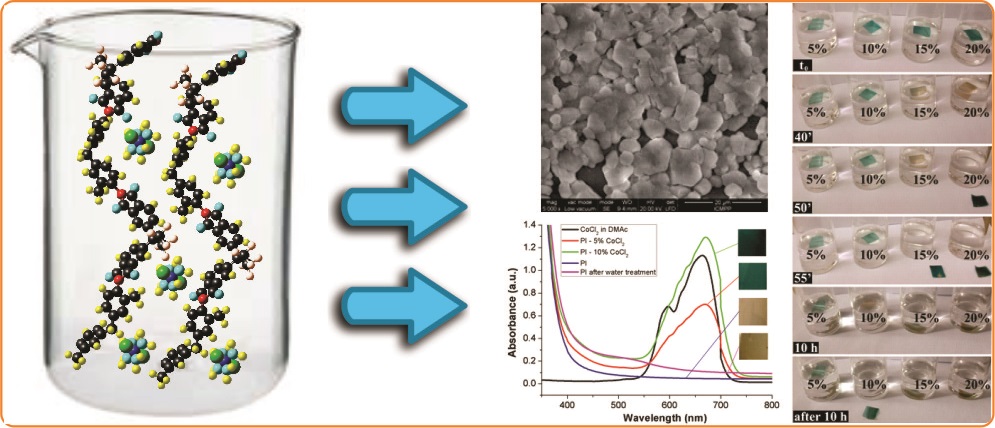
The CoCl2/polyimide hybrid materials underwent a visible color change when exposed to moisture and reverted immediately to the original color by heating, under current flow, or after a longer period of time without drying in normal atmosphere. This mechanism responsible for the color change as a function of humidity exposure was investigated in detail, revealing new insights into the sensing ability of CoCl2-modified materials.
http://dx.doi.org/10.1016/j.snb.2016.04.172
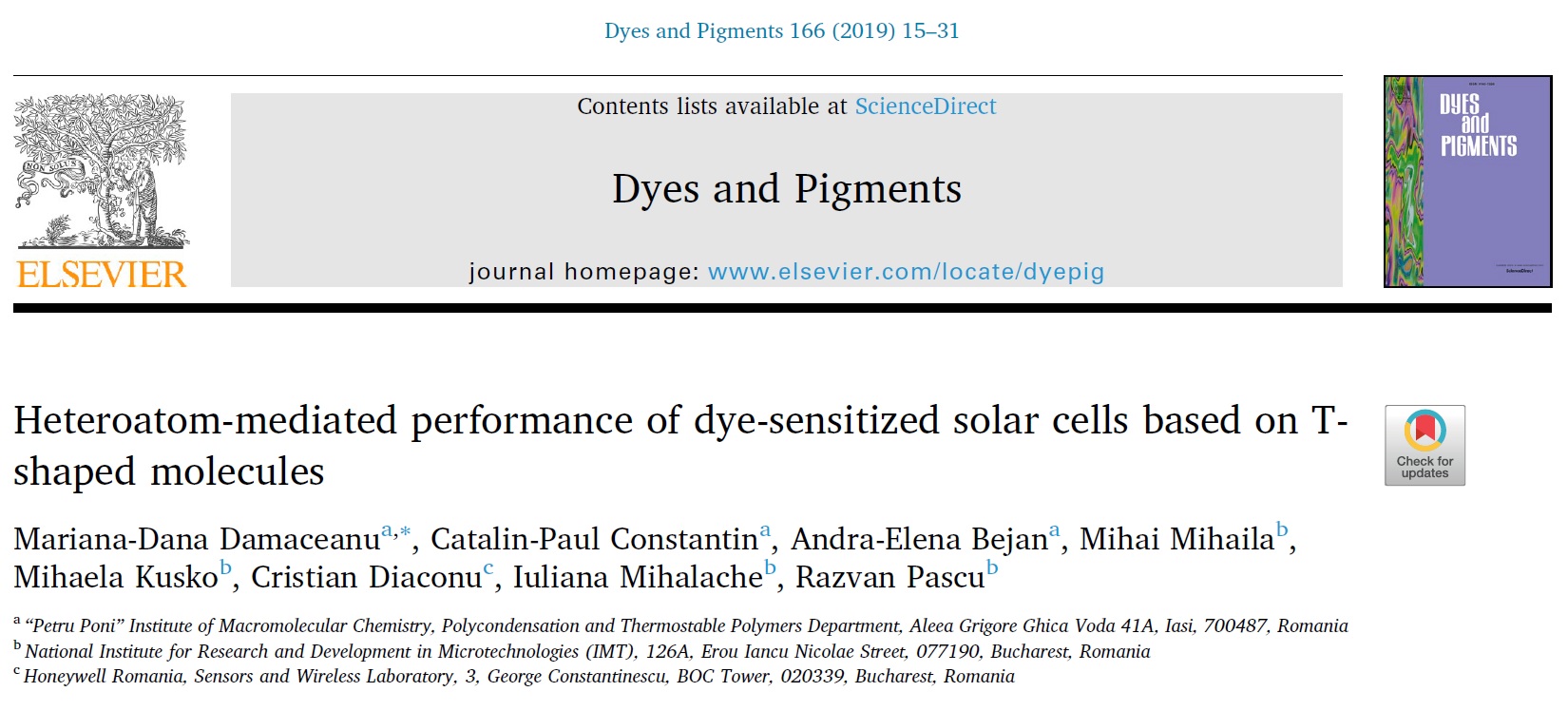
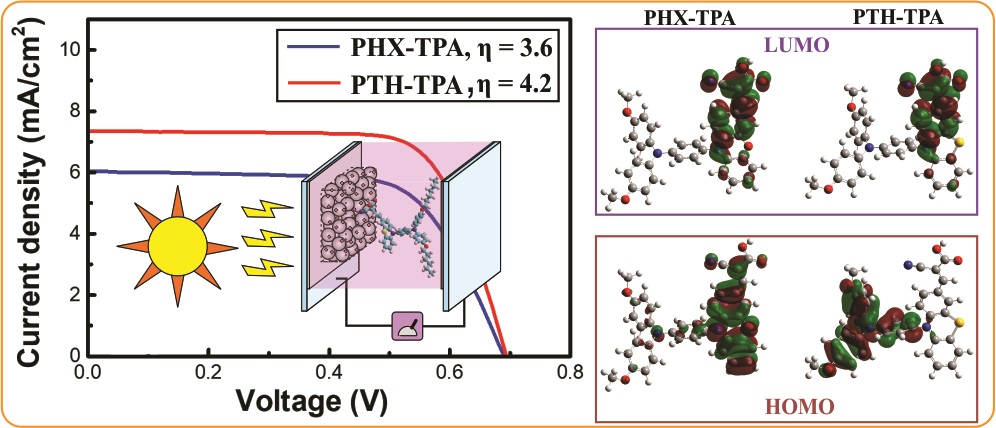
Two novel “sister” organic dyes featuring a T-shape molecular pattern based on phenothiazine/phenoxazine and triphenylamine framework as electron donor core and cyanoacrylic acid as acceptor and anchoring group were designed, synthesized and thoroughly characterized. To the best of our knowledge, this is one of the first studies which highlights how a single heteroatom in a T-shape dye structure can affect the dye interaction with the electrolyte and its regeneration, consequently the photovoltaic performances and brings out new opportunities for developing novel dyes for efficient DSSCs.
https://doi.org/10.1016/j.dyepig.2019.02.055

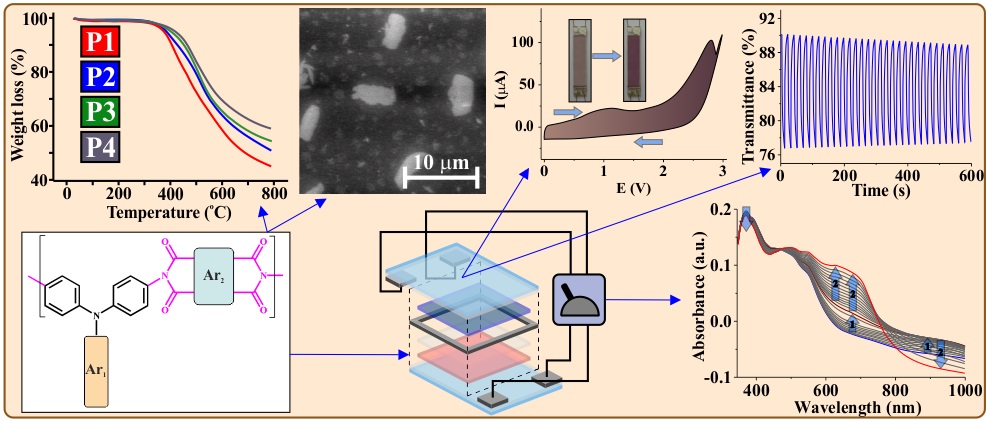
The study conveys an important contribution to the development of polyimide materials with both enhanced electron-accepting and transporting characteristics (n-type) and stable electrochromic behavior in electrochromic devices at direct current bias, some feature combinations not commonly found in the literature. In addition to general properties investigations, our study highlights the ability of a n-type material toprovide a good electrochromic response in the anodic region. Unlike previous studies, the electrochromic performance of the polymers was evaluated directly on electrochromic devices.
https://doi.org/10.1021/acs.macromol.9b01576
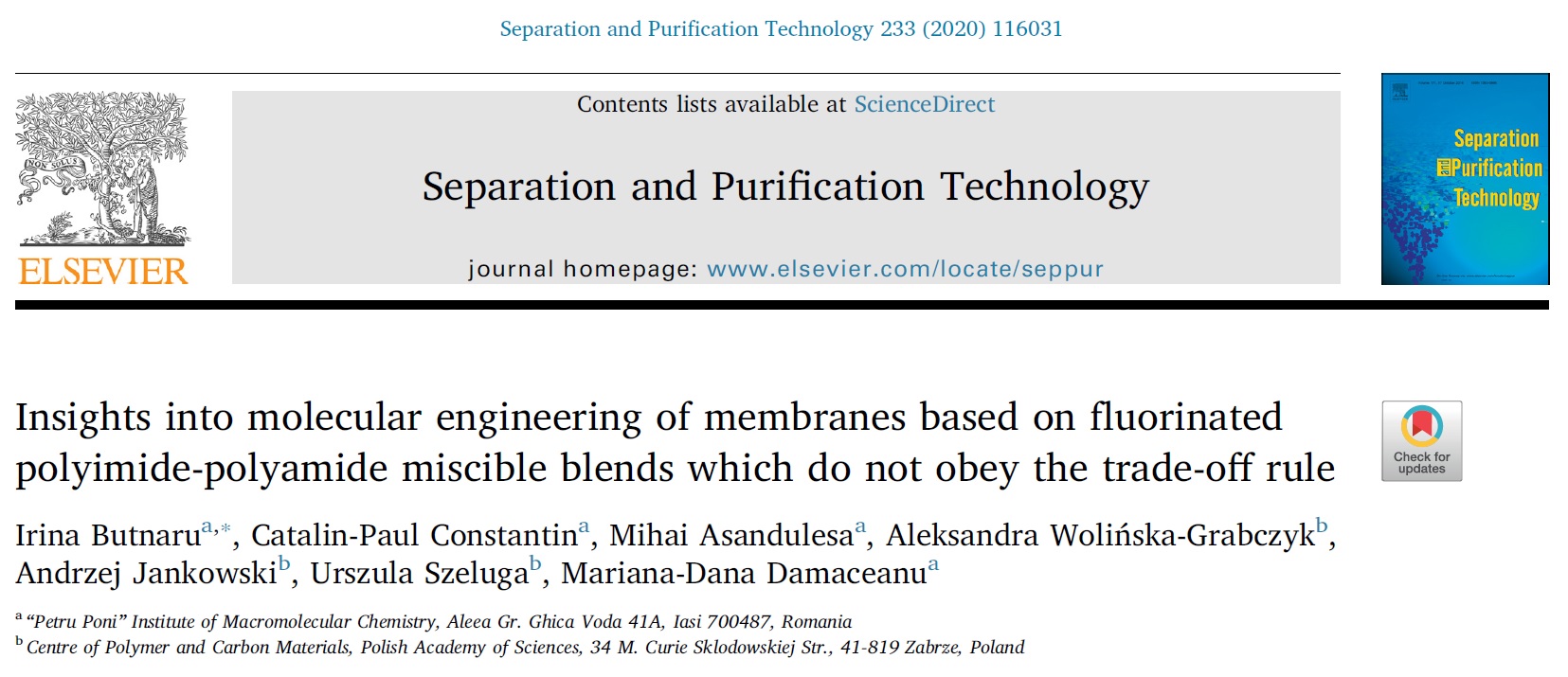
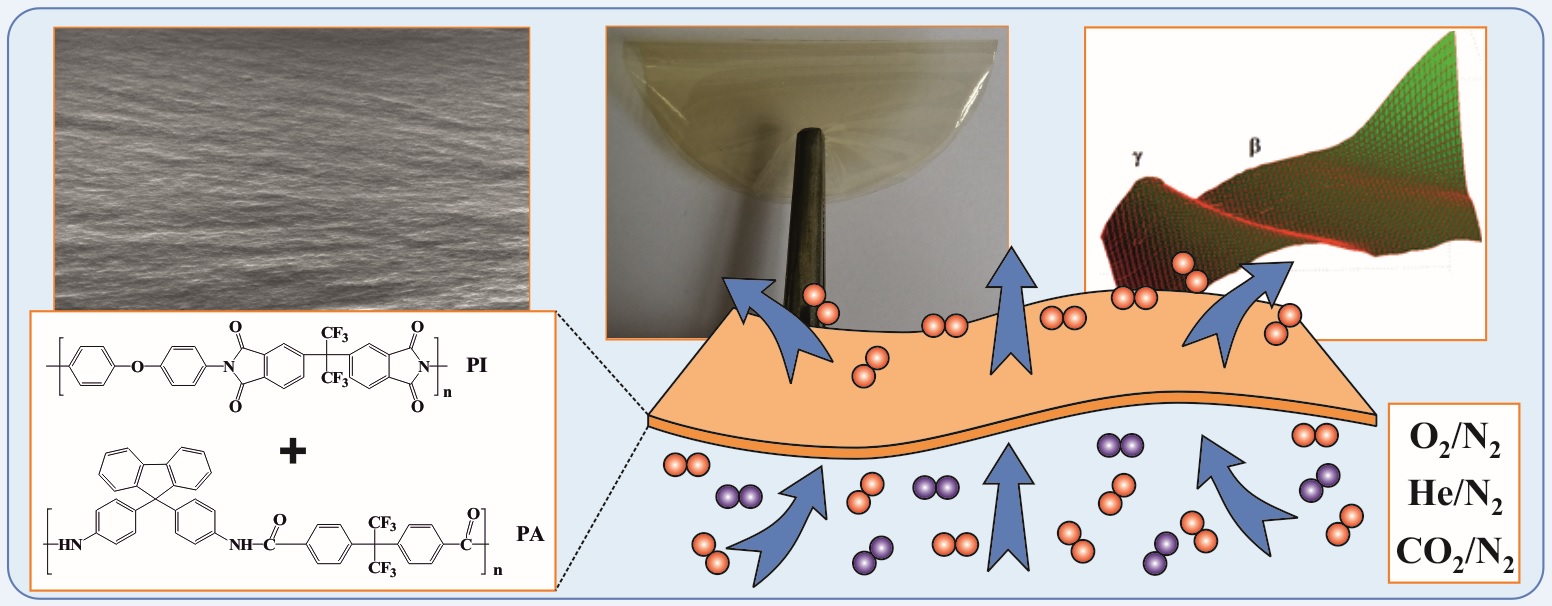
The study focuses on the blending technique as a successful approach to improve gas separation performance of a series of polyimide (PI) - polyamide (PA) miscible blends by breaking the trade-off rule. Also, it brings an insight into the physico-chemical characteristics of these blends which were discussed in correlation with the polymer blend composition and structural elements of each component. The gas permeation behavior of the blends was evaluated with respect to the influence of PA content on performances. It was found that gas permeability increases with the rise of PA component, following the simple mixing rule with negative deviation for the highest PA content. The enhanced permeability was obtained with a minimum loss of selectivity. The blend with 50 wt% of PA offered the best option of increased permeability and preserved selectivity.
https://doi.org/10.1016/j.seppur.2019.116031
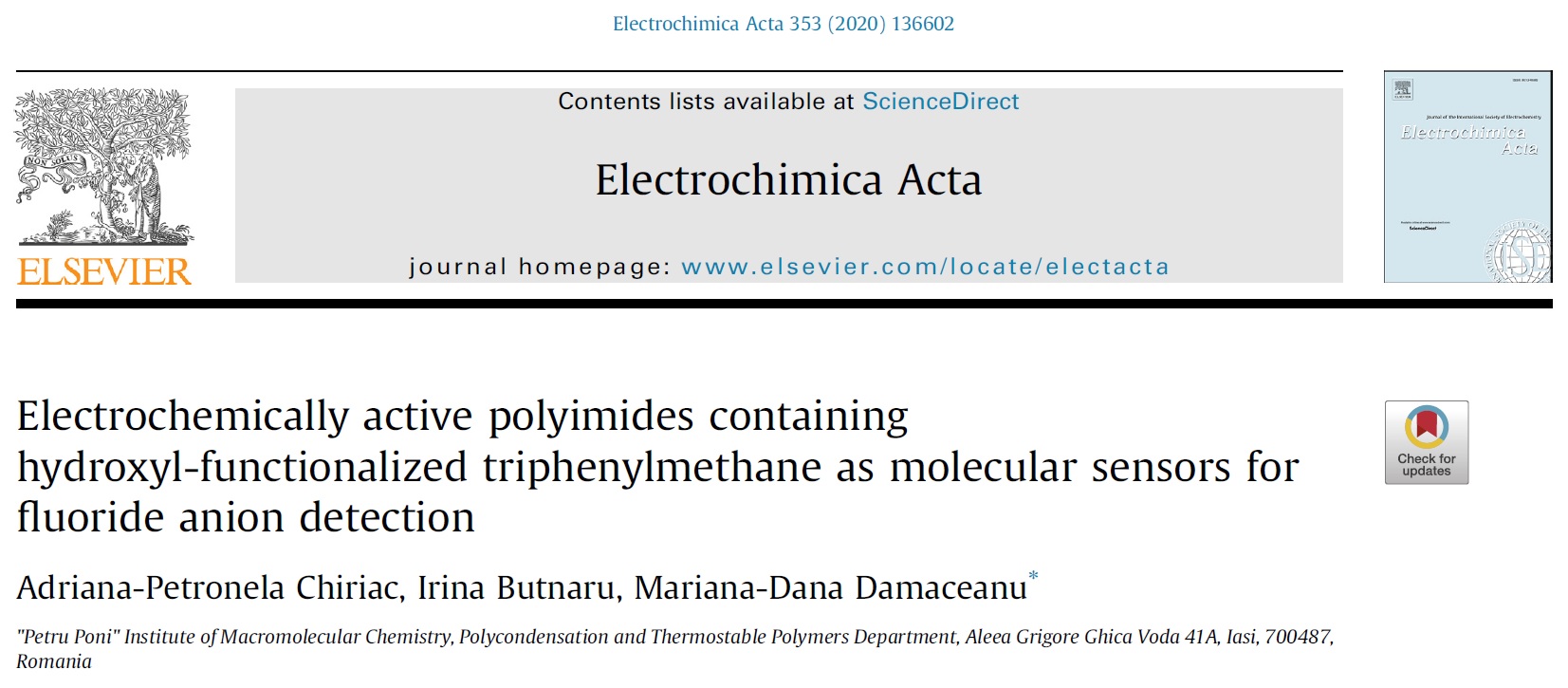
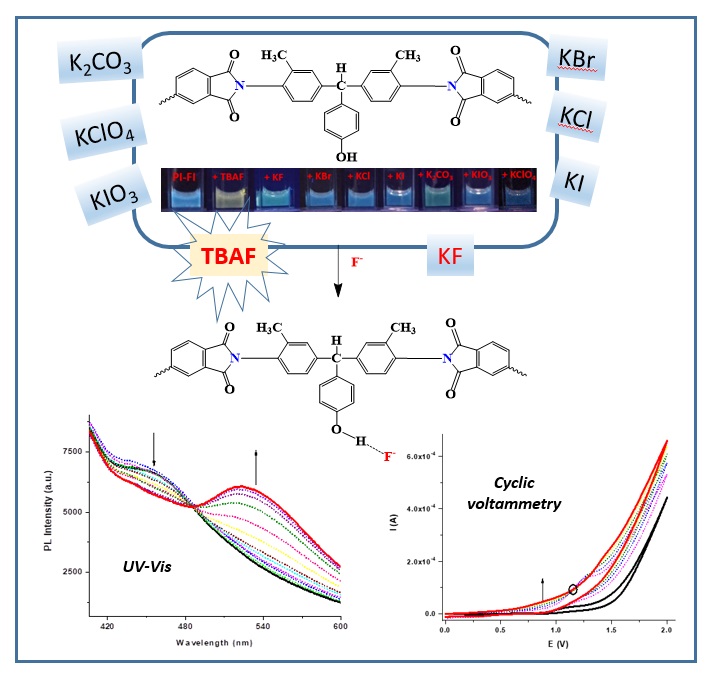
In the challenging pursuit of endowing the high performance polyimide systems with efficient responsive side chains, we have designed and synthesized a series of four molecular sensors containing OH group grafted on triphenylmethane (TPM) core as receptor for the fluoride anion. In addition to the general properties characteristic for aromatic polyimides, our study highlights for the first time the optical and electrochemical responses promoted by the TPM-OH core in imide-type systems. As an original approach, the responsive polyimides behaviour toward Fˉ anion has been explored by fluorescence and cyclic voltammetry, besides the already known UV-Vis and 1H NMR spectroscopies, demonstrating that a single OH group/ monomeric unit is appropriate for Fˉ anion recognition.
https://doi.org/10.1016/j.electacta.2020.136602

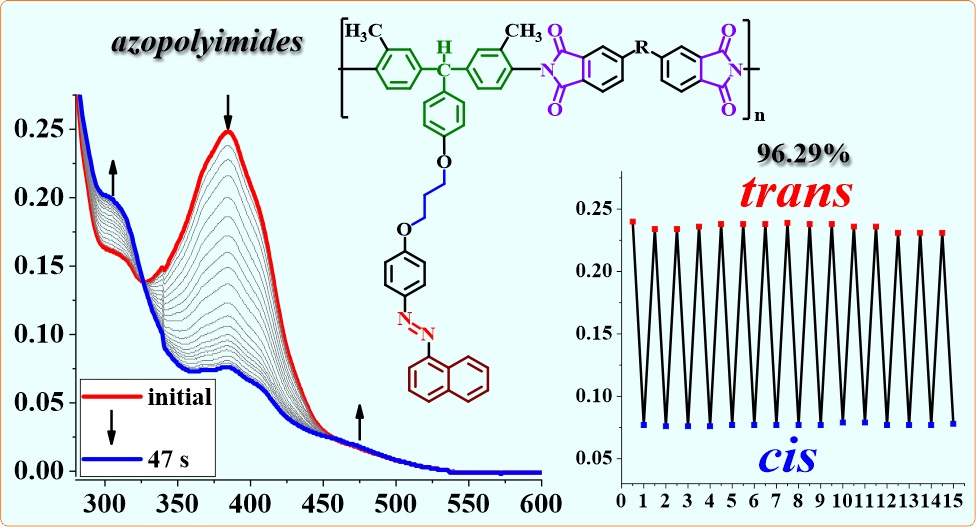
Pursuing the research toward smart material development, novel azopolyimides containing highly photoresponsive azo-naphthalene moieties are synthesized and fully characterized toward efficient, fast, and stable cis−trans photo/thermal isomerization switch. To prove the switching characteristics insufficiently explored for polyimides (PIs), trans−cis and cis−trans photo/thermal isomerizations are surveyed by UV−vis and 1 H NMR investigations. UV− vis absorption studies reveal unprecedented fast trans−cis switches (47−130 s) through rotation mechanism in dimethylformamide, with one of the highest efficiencies reported nowadays for PIs, up to 90.2%. Slower thermal cis−trans relaxation is experienced owing to a nonpolarity-assisted inversion mechanism. After 15 repetitive trans−cis−trans switching cycles, an excellent stability up to 96.29% is recorded. The PI films obtained without any dilution in solid state reach the photostationary state after longer irradiation time but with excellent efficiency, up to 75.7%, and trans−cis−trans conversion stability, up to 92.68%, after 10 cycles.
https://dx.doi.org/10.1021/acs.macromol.0c02182
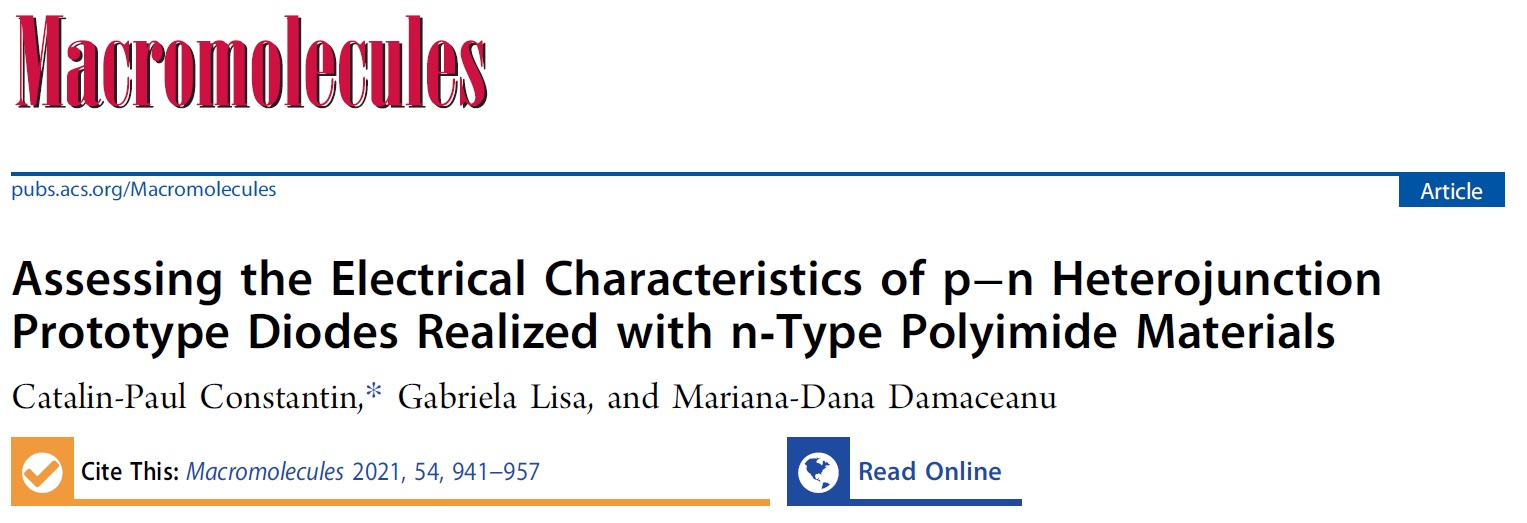
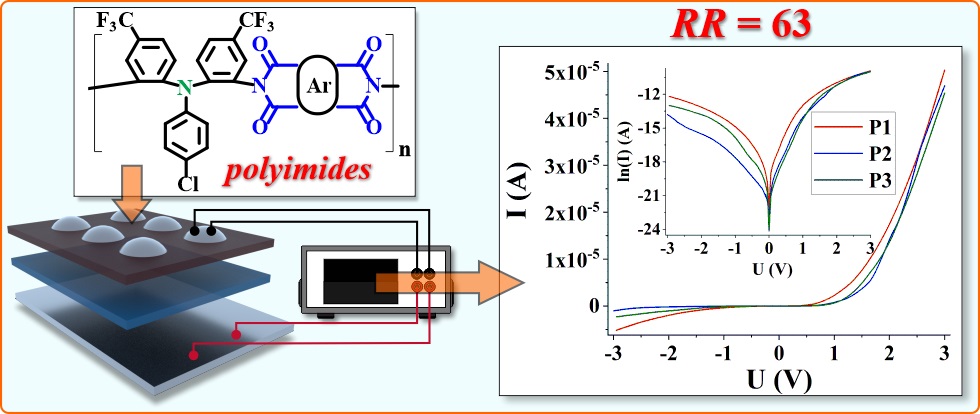
Three new aromatic polyimides with donor−acceptor topology consisting of electron-donating ortho-catenated triphenylamine (TPA) modified with two trifluoromethyl (CF3) groups and electron-accepting naphthyl(di)imide- or perylenediimide-based moieties were synthesized and thoroughly investigated. Beyond the investigation of the main properties induced by the mentioned structural elements, the study brings a deep understanding of the n-type characteristics of these polyimides never assessed before. Thus, the polymers were tested in p−n heterojunction prototype diodes to provide a detailed investigation on the current−voltage and charge transport characteristics. We have found a rectification ratio up to 63, moderate to high shunt resistance, moderate to low series resistance, and moderate current leakages. The charge transport evaluation disclosed the tunneling phenomenon as the main mechanism that drives the realized prototype diodes, with an ideality factor down to 5.48.
https://dx.doi.org/10.1021/acs.macromol.0c01853 |


